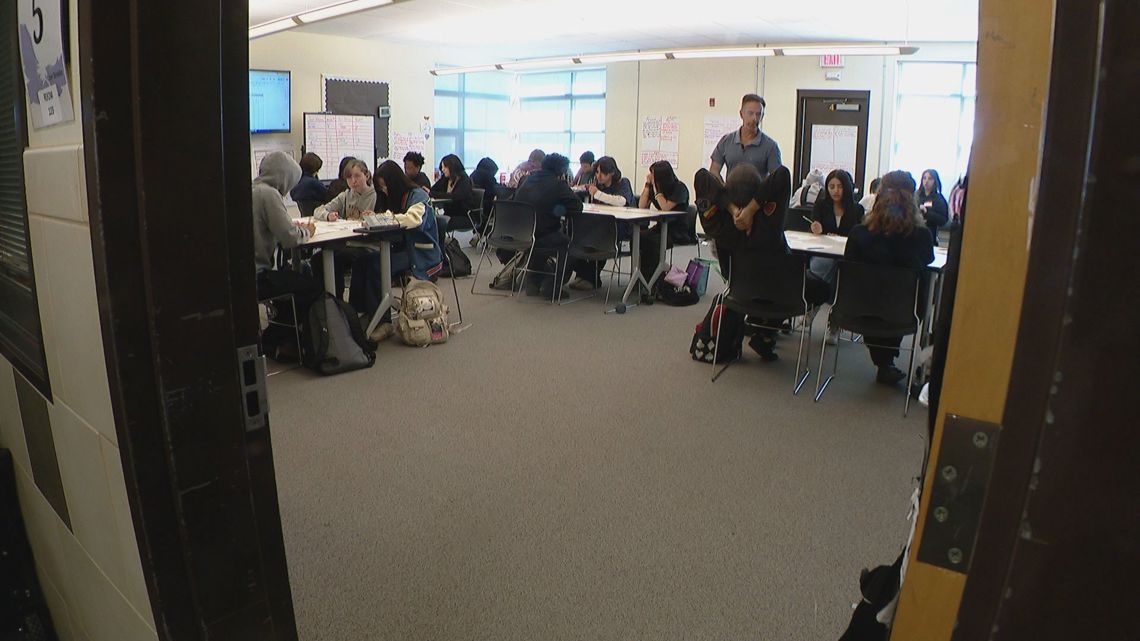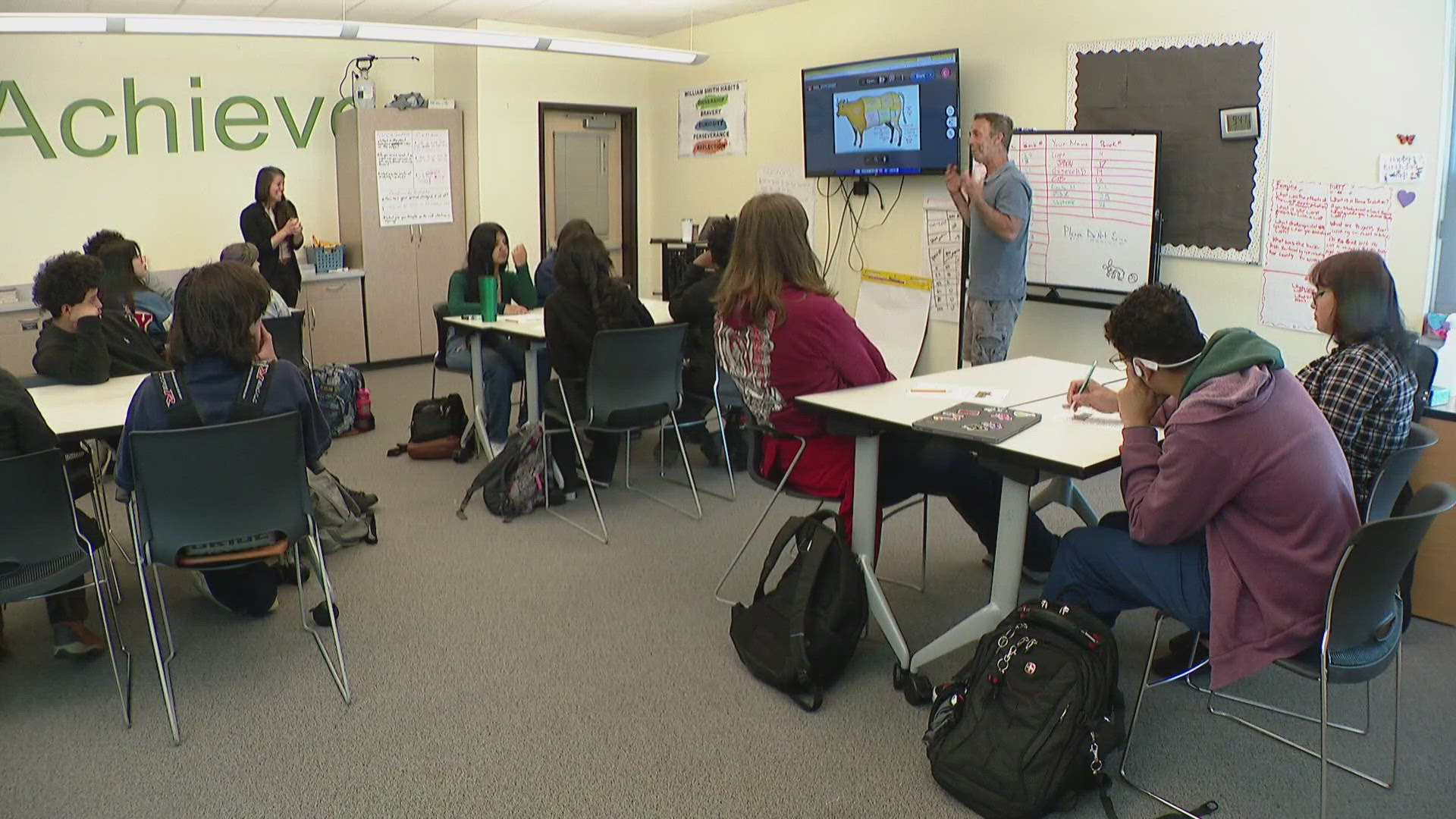AURORA, Colo. — Wolves are in the news almost every day in Colorado, and most of the time, it doesn't feel like good news. But a couple of Aurora teachers are using the state's wolf reintroduction plan to start a conversation with kids – while learning some new lessons and no one is fighting.
At William Smith High School, students learn about all angles of Colorado's wolf reintroduction plan, and the discussions are civil.
"Your challenge today is to think about what is the appropriate number of wolves for the state of Colorado, based on the evidence in front of you," said math teacher Chelsea Audin, as she started the class, made up of mostly sophomores.
Audin, along with English teacher Matt DiOrio, teaches a class called "Wolf Empire," which uses both math and literacy to teach students about wolf reintroduction, while using both skills.
"To take a class and become educated on the topic is pretty, pretty cool, especially to learn math and literacy through it," said sophomore Lila Martinez. "I really like that I get to be up to date on things that you usually wouldn’t be -- as a teenager I’m not really looking into wolf reintroduction and stuff like that."
"Wolf Empire" is an all-day, four-week class. Students get to opt into classes that combine different disciplines.
"When we asked them why they chose this class it was either because they loved dogs or wolves, but they didn’t have the knowledge behind that," DiOrio said. "We want them to understand the different perspectives, not just like, 'Oh we love wolves, we want them here," but what's the impact, and we’re not just looking at other wildlife or land, but also financially what does this look like for everyone in Colorado."
Audin and DiOrio are both passionate about wolves, but they know not everyone feels the way they do. They know in a state like Colorado, where the vote to reintroduce wolves narrowly passed, they need to show all sides of the story.
"Those voices of the people who oppose reintroduction are so important right now, especially those who are most directly impacted," Audin said. "We've had some guest speakers in, that have actually challenged some of the ideas that I had coming in as a teacher with their different perspectives."


Sophomore Brian Marquez said he had learned a lot in the first half of the class about wolf advocates and what ranchers face.
"They want to take care of their cattle as well as their families because that’s what brings them their profit," Marquez said. "The other percentage that voted for it probably doesn’t have that same risk."
Audin said that it is rare that she gets to teach math classes with real-world applications, like how many wolves could live healthily on Colorado's landscape, given the human population.
"The great thing is there’s so much real data out here that we have not just sat and looked at a math problem that doesn’t have real-life context and is not based in real-life data," Audin said.
On the English side of the lesson, DiOrio started with separating myth from fact with stories like "Little Red Riding Hood" and moving on to non-fiction books like "American Wolf." What excites him most about teaching the class, is that the story surrounding wolves in Colorado is ever-changing.
"We could do another class right after this," DiOrio said. "There is a lot to learn."
SUGGESTED VIDEOS: Wolves in Colorado

